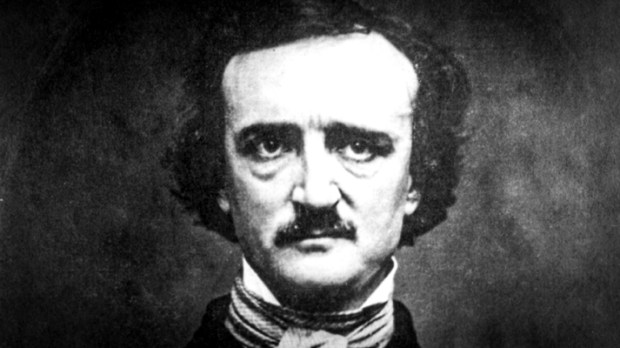Edgar Allan Poe lived in the New York City borough of the Bronx for a number of years, and his house can still be visited a few blocks from the Jesuit-sponsored Fordham University.
Some scholars believe that Poe drew inspiration from the campus for some of his most famous works. In fact, there is a plaque on the exterior of the University Church that reads in part, “The bell in the tower, known since as Old Edgar Allan, is said to have inspired Poe, a friend and neighbor, to write his celebrated poem, ‘The Bells.'”
Hear the sledges with the bells— Silver bells! What a world of merriment their melody foretells! How they tinkle, tinkle, tinkle, In the icy air of night! While the stars that oversprinkle All the heavens, seem to twinkle With a crystalline delight; Keeping time, time, time, In a sort of Runic rhyme, To the tintinabulation that so musically wells From the bells, bells, bells, bells, Bells, bells, bells— From the jingling and the tinkling of the bells.
Today, the bell is kept in a vault inside the campus’s Walsh Library.
Poe came to be friends with the faculty of what was then St. John’s College. According to the Fordham Ram, the campus provided Poe with much-needed companionship. Some of Poe’s time on campus is recalled in Fordham: A History and Memoir by Fr. Ray Schroth, S.J., the campus newspaper points out:
Poe, Scroth writes, thought St. John’s University was a “most congenial place.” Poe often found great solace in long walks near his home and they often led him to the gates of campus. His time on campus brought him close to one Jesuit in particular, named Edward Doucet, who was in his 20’s when he met the poet, according to Schroth. The two often strolled around campus as Poe consulted Doucet about his works. The Jesuits would allow Poe to peruse their library, where he would often stay for hours. While Poe was not wealthy or widely known, the Jesuits knew of his literary brilliance and welcomed him with open arms. The gesture was not unrequited. Of the Jesuits, Poe once said they were “highly cultivated gentlemen and scholars.” “They smoked and they drank and played cards,” Poe said, “and never said a word about religion.”
It was not perhaps Poe’s first brush with Catholic priests. According to an apocryphal story, the poet was walking along a noisy street somewhere (not near Fordham, as the area was rural at the time) and heard church bells were ringing in the middle of the day. The priest inside the church explained the Angelus to him. That’s the prayer that commemorates the Annunciation of the Lord, when the Angel Gabriel announced to the Virgin Mary that God wished her to bear her Incarnate Son.
Poe went home and wrote “Hymn,” which originally appeared in his short story “Morella,” in 1833:
At morn—at noon–at twilight dim— Maria! thou hast heard my hymn! In joy and woe—in good and ill— Mother of God, be with me still! When the Hours flew brightly by, And not a cloud obscured the sky, My soul, lest it should truant be, Thy grace did guide to thine and thee Now, when storms of Fate o’ercast Darkly my Present and my Past, Let my future radiant shine With sweet hopes of thee and thine.

